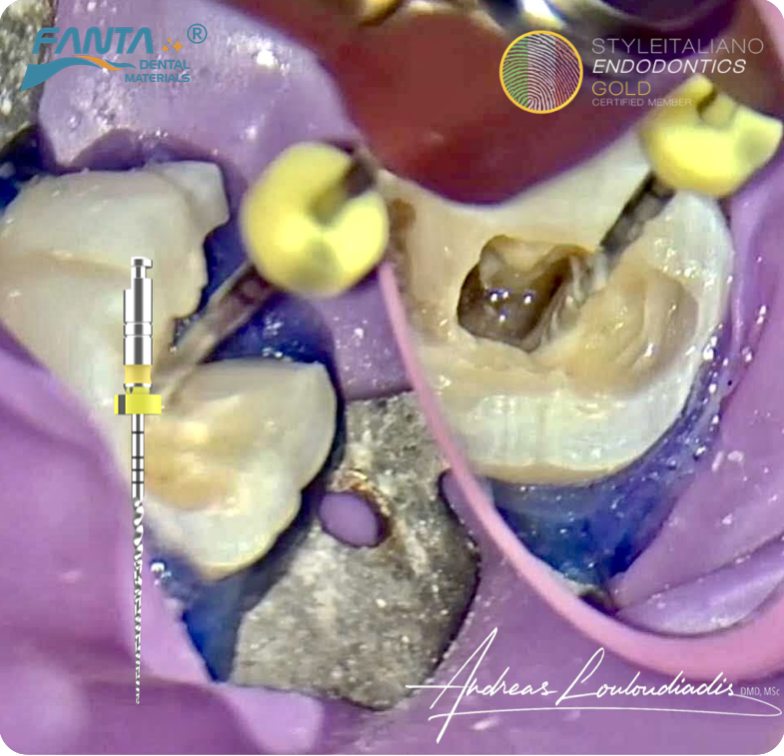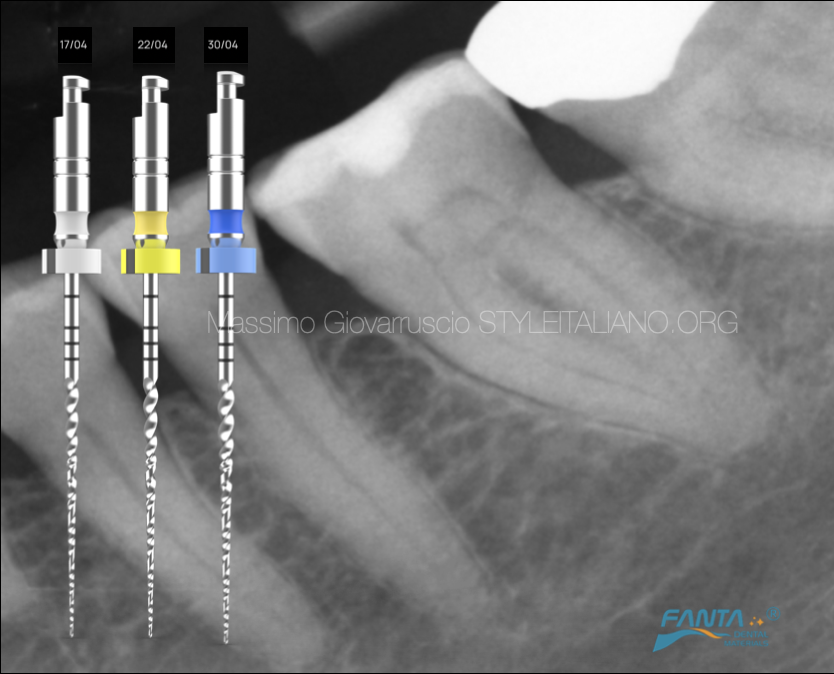
Treating curved canals with Harmony files
16/06/2025
Massimo Giovarruscio
Warning: Undefined variable $post in /var/www/vhosts/styleitaliano-endodontics.org/endodontics.styleitaliano.org/wp-content/plugins/oxygen/component-framework/components/classes/code-block.class.php(133) : eval()'d code on line 2
Warning: Attempt to read property "ID" on null in /var/www/vhosts/styleitaliano-endodontics.org/endodontics.styleitaliano.org/wp-content/plugins/oxygen/component-framework/components/classes/code-block.class.php(133) : eval()'d code on line 2
The primary goal of root canal shaping is to create a continuously tapered, funnel-shaped canal while preserving the original anatomy. This is significantly harder to achieve in a curved canal without altering its natural shape.
As a file is pushed through a curve, it naturally wants to follow the path of least resistance, which is a straighter line. This can cause it to cut more dentin on the outer wall of the curve and less on the inner wall, leading to an uneven and potentially dangerous preparation.
The variable cross section and the innovative taper design of Harmony files make them indicated for treating curved and calcified canals. A balanced property between elasticity and flexibility give to the files the great chance to treat the curved canal with no transportation and respecting the anatomy in all minimally aspects.
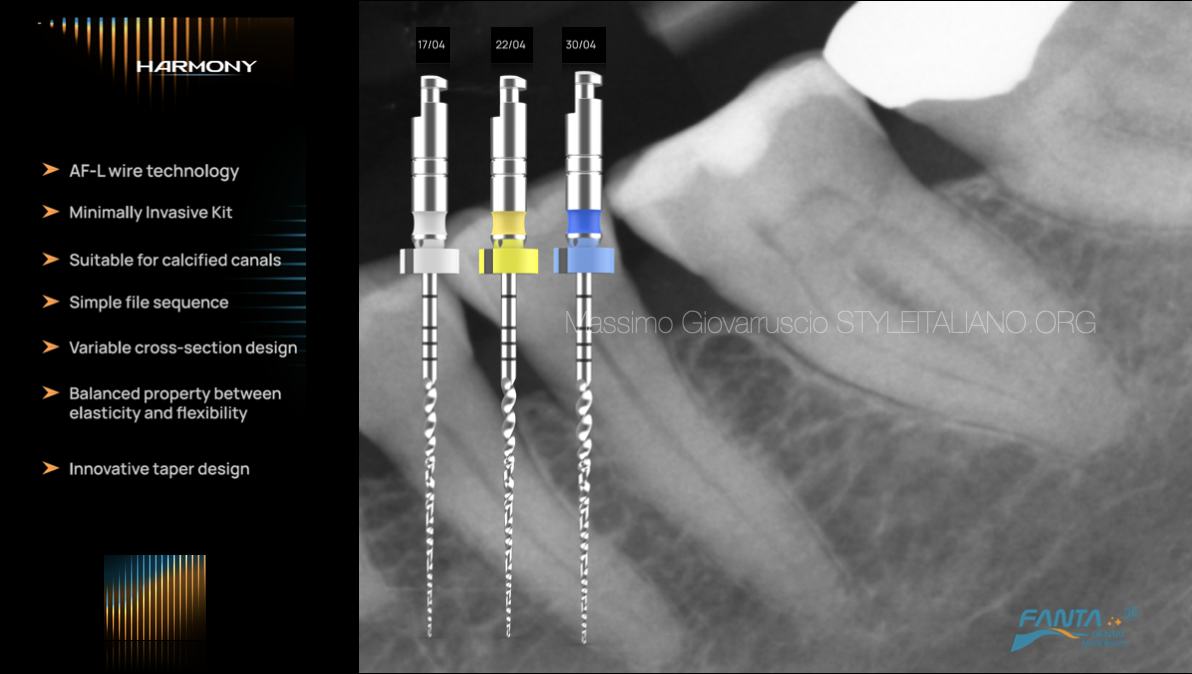
Fig. 1
A patient came to my attention complaining about unbearable pain in the lower left hemiarch.
Tooth 3.6 was responsible for the problem, being diagnosed with symptomatic irreversible pulpitis.
Due to the complex anatomy of the tooth, I decided to treat it with Harmony files.
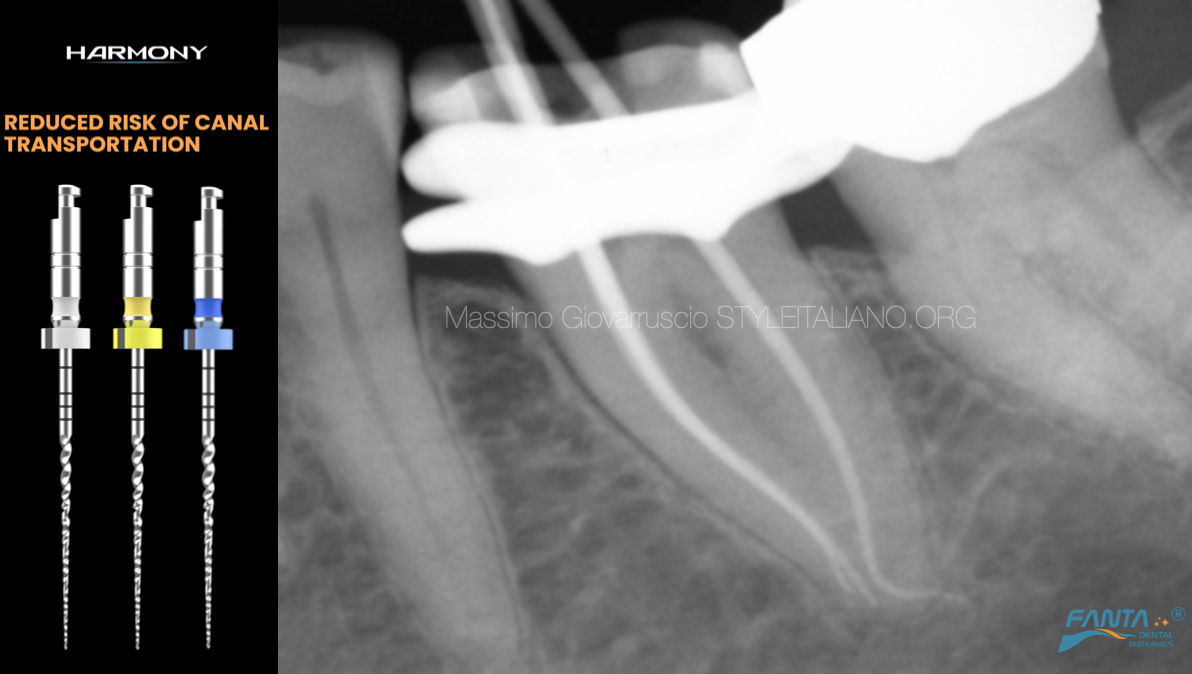
Fig. 2
The "master cone fit," is arguably one of the most critical steps in root canal treatment, primarily because it directly dictates the quality of the final obturation (filling) and, consequently, the long-term success of the treatment. However the cone fit serves as a vital diagnostic step. A perfectly fitted master cone confirms that the canal has been adequately shaped to the desired working length and taper.
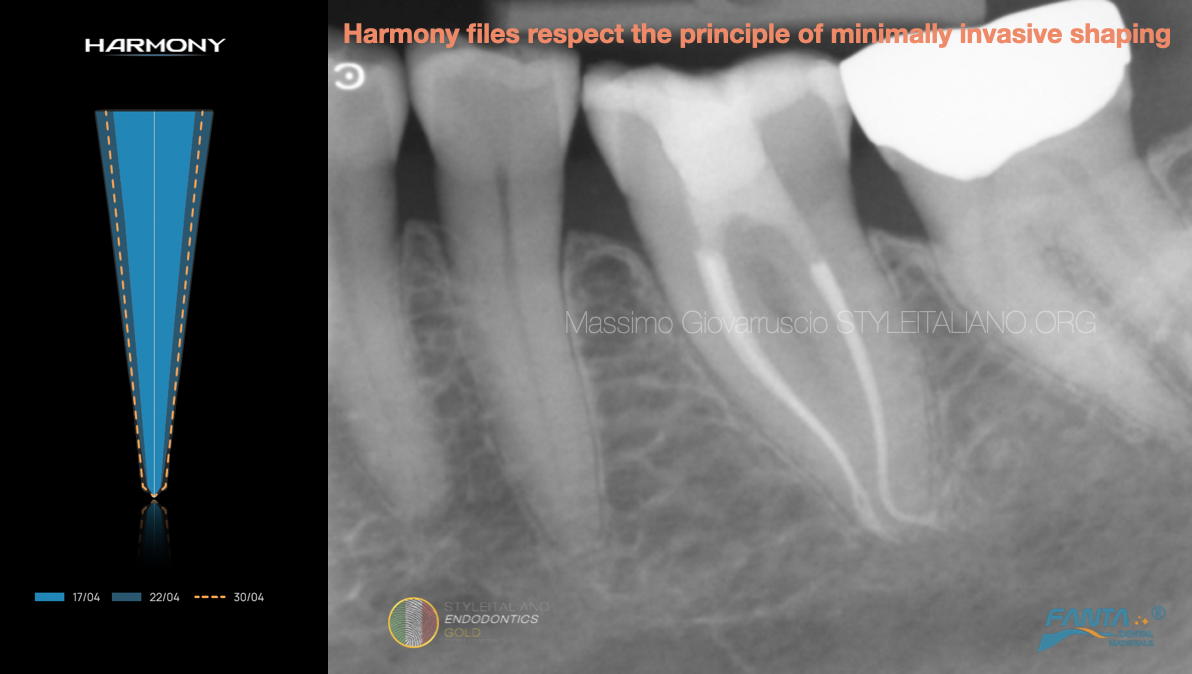
Fig. 3
A periapical radiograph shows the successful, minimally invasive treatment of a complex curved root canal. The use of the Harmony file system was instrumental in maintaining the canal's original shape and integrity.
Conclusions
In summary, the difficulty in shaping curved root canals stems from the challenge of maintaining the complex natural anatomy while effectively cleaning and enlarging the canal, without causing iatrogenic damage. This requires a thorough understanding of root canal morphology, meticulous technique, and the use of appropriate instruments and technologies


